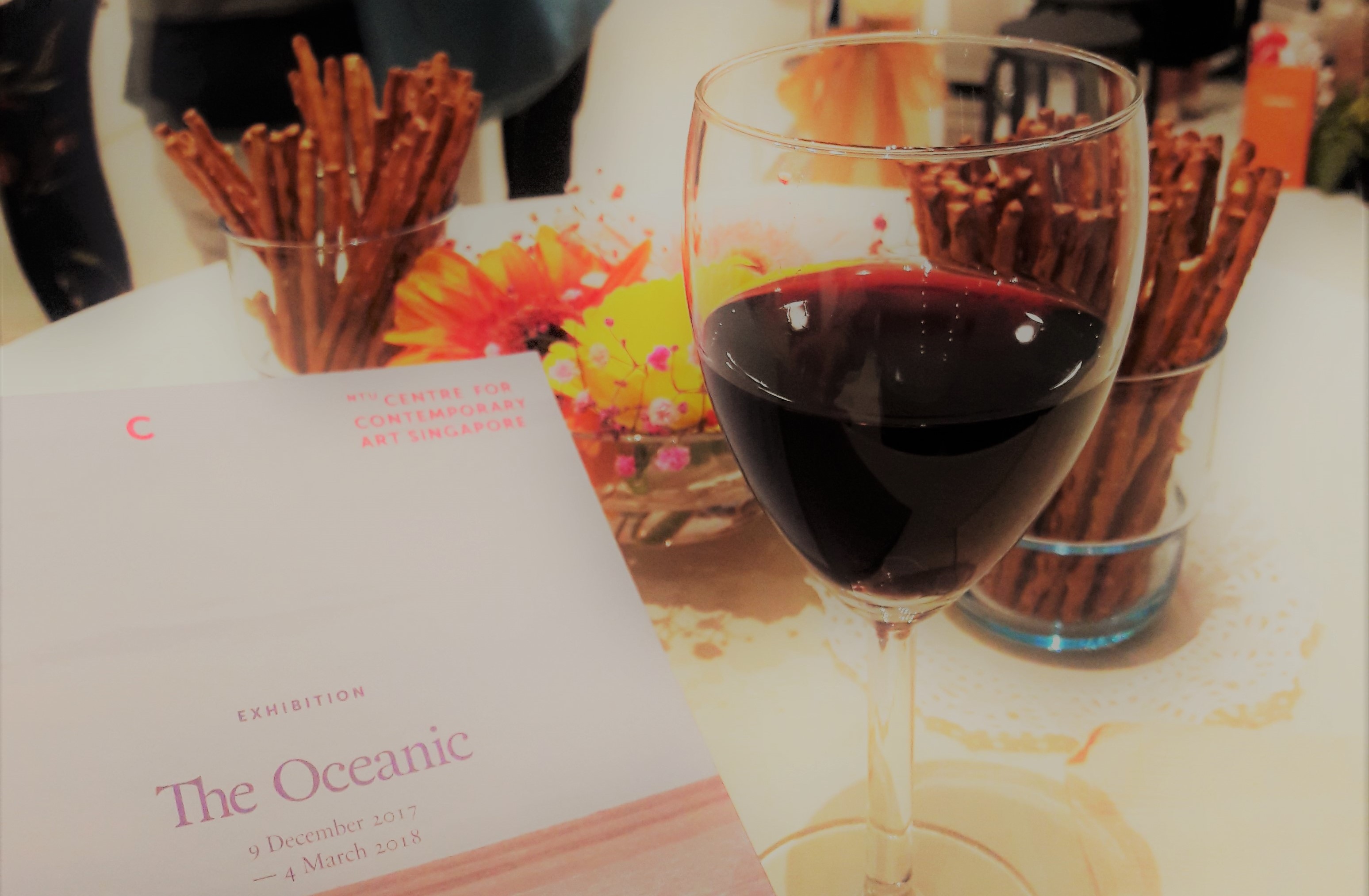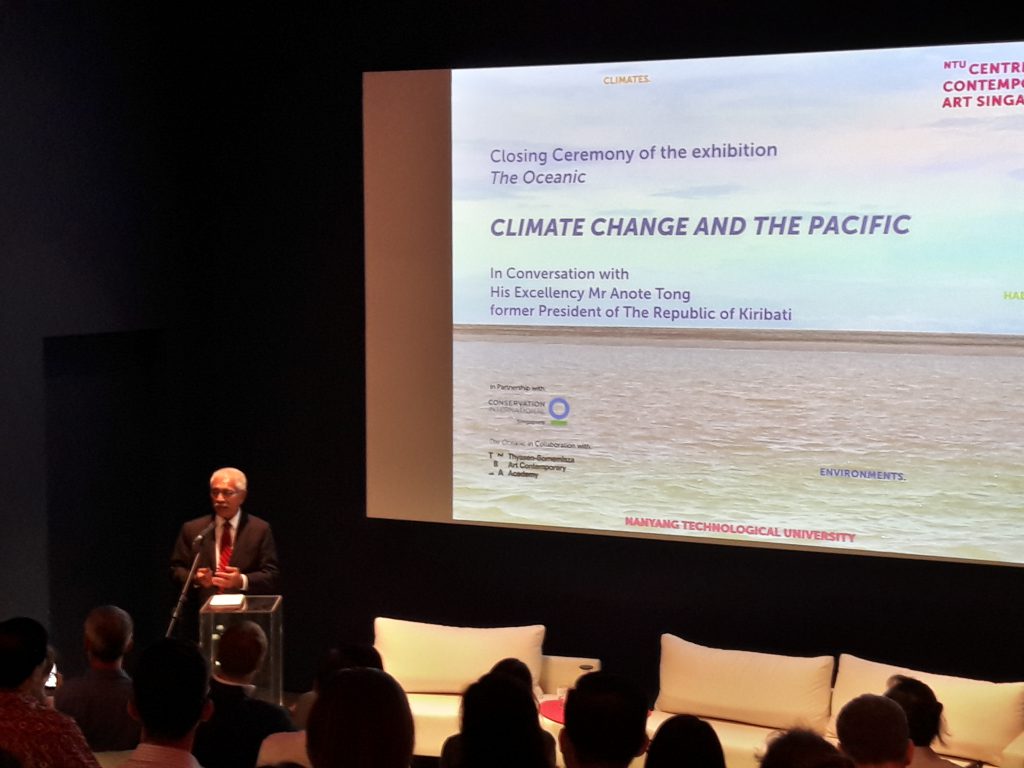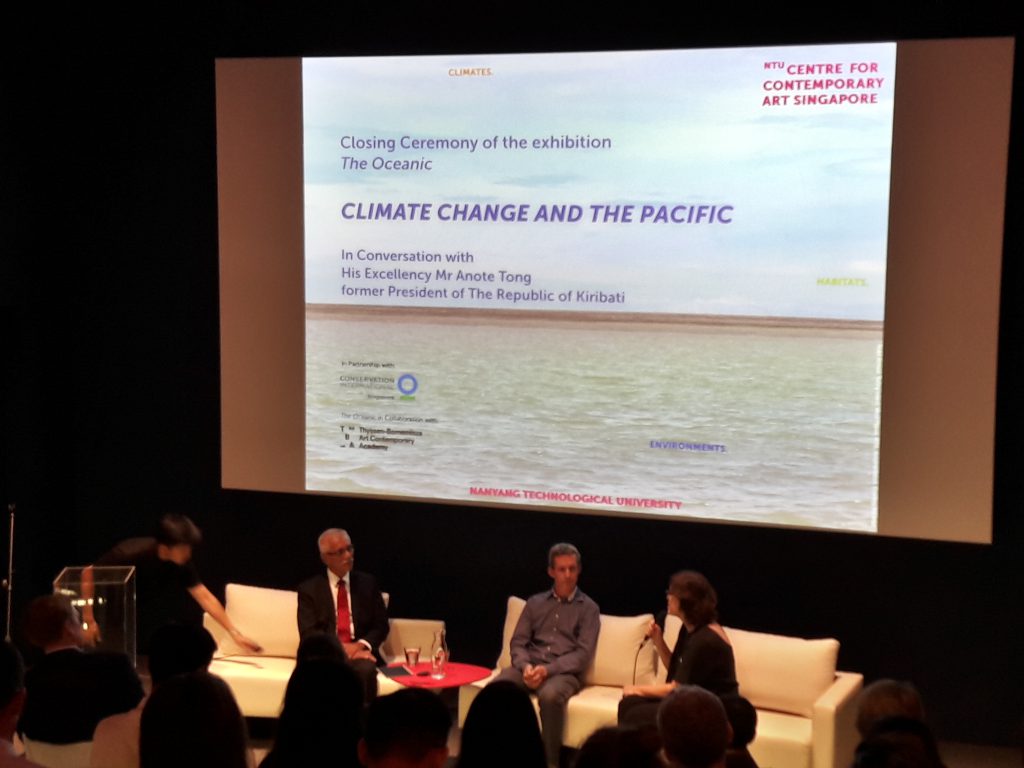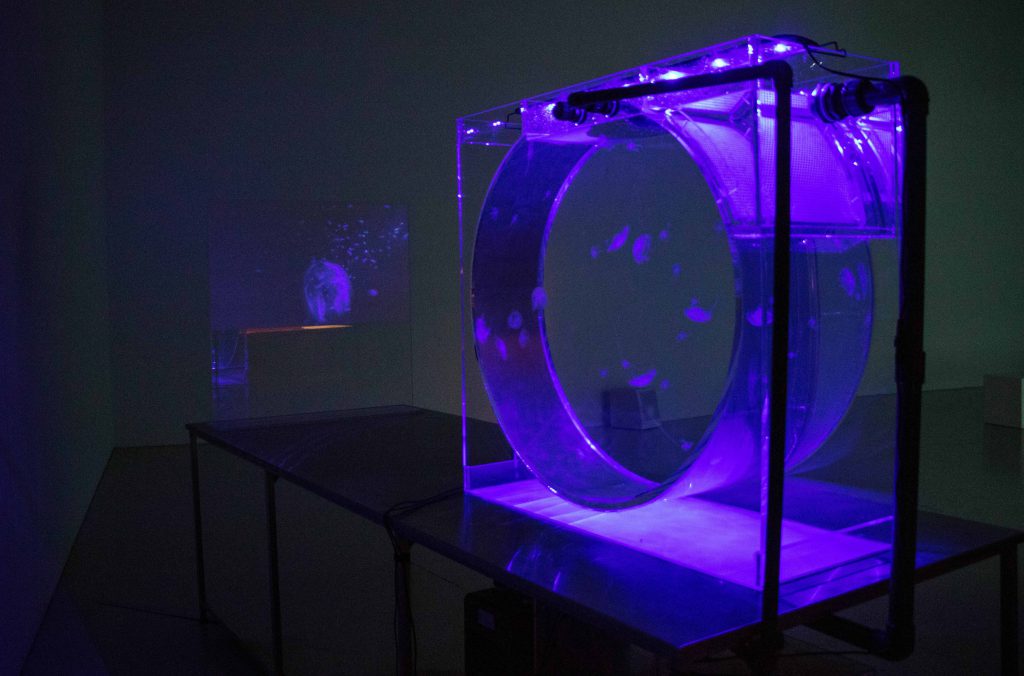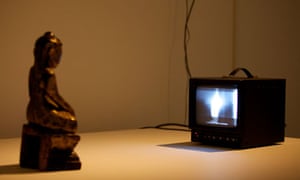Of course I was greatly impressed, like everyone else was, with Matt Adam’s compressed account of Blast Theory’s journey and some future plans in the pipeline.
It is interesting to see the progression the group made over the years (in parallel to the advances we’ve had in digital technology). From the very much dramatically stage-driven performance of Gunmen Kill Three (1991) where participants were invited up to ‘shoot’ at two other participants in an improvised live-situation, to the entering into the VR world of Dessert Rain (1999) where participants first play a virtual mission and are afterwards confronted with the real world events of the Gulf War.
While the graphics and technology may appear dated given today’s standards, those designed experiences still remain very profound as we can see in the documentation of the various projects. They really draw people into a theatrical experience which is at the same time opening up the discourse into many real world issues and the human psyche.
My favorite work was 2097: We Made Ourselves Over (2017). The core concept was this world in the future where young girls will govern the world and the many problems that people will come to face in the futuristic hybrid city of Aarhull. They made 5 short films to showcase this world and its people from the future. These were very effectively screened on moving vans around Hull, UK. These mobile platforms delivered the story rapidly to the people of Hull as they were short to watch and easy to comprehend. The films were also available on a smartphone app. And then the magic happened on 1 Oct when every phone-box in the city rang out all at once. The people of Hull scrambled to answer the call from the future. A lucky few even getting the chance to get on an electric car that drove right up the street and on the vehicles they met a member of the cast from the future.
What surprised me is that people interacted as an entire populace and they each had a unique experience and connection to this futuristic city of Aarhull. I wonder how this would’ve panned out in Singapore? I enjoy how these lines between fiction and reality can be broken down and the suspension of disbelief that participants are willing to invest in a successful immense work of interactive media. Getting introduced to this work and hearing Matt Adam’s thoughts about it all was the highlight of the night for me.
I normally don’t really enjoy Q&As because they sometime get very sidetracked and all that. But this one was really engaging as some of the questions raised by members of the audience were really tricky issues like the ethical and societal concerns surrounding Blast Theory’s work and I think Matt Adams addressed these extremely well. It made me feel like legalities aside, the works were very well-thought out for everyone’s unique experience and I’d definitely like to be part of one of their works someday.
Also another case in point, during the Q&A, I was very impressed by Matt Adam’s clear understanding and distinction in where he situates his intent for the works even though the team as a whole pretty much sit on the crossroads of a diverse range of media. Mark Adams asserts that he started out with Blast Theory in a creative endeavor towards theatrical design and direction. And that has always been his intent and input ever since. He pointed out that the talk would have been much different if it were to be given by Ju Row Farr or Nick Tandavanitj. He sees the works as theater performances, albeit working in very much unconventional and expanded theatrical spaces. That really reminded me of the honest truth of any collaboration. Every member should bring a different perspective into the project, all can be equally valid and instrumental. After all, collaboration is the coming together of parts to a whole.
I think that the talk was extremely inspiring and I hope that these notes that I’ve written will help push me forward in my aesthetic endeavors.




